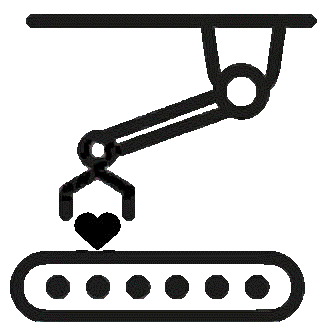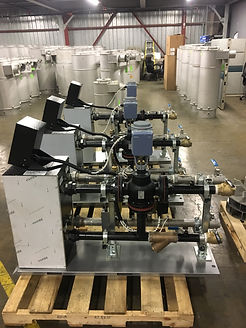A prepackaged domestic hot water system that by use of a plate heat exchanger heats up domestic water to a user selected temperature setpoint. One side of the heat exchanger connects to industrial gas fired boilers while the other side (domestic side) connects to the cold supply of city water. The control loop of this prepackaged product was planned to consist of a controller, temperature transmitters (or RTDs), and a very accurate electro-hydraulic actuator. The controller is continuously in communication with the outlet temperature transmitter located on the cold side as well as the actuator located on the hot side. By receving temperature measurements from the temperature transmitter (on the cold side) the controller sends correction signals to the actuator (on the hot side) which is continuously regulating the amount of heat entering the heat exchanger.
Problem:
Upon the user selecting a desired temperature setpoint through the HMI, the domestic water outlet temperature had to stabilize to a maximum of +/-2°F which was unheard of in the industry.
Challenges:
The control loop needed to be able to stabilize the water outlet temperature down to a very tight tolerance which was a challenge even if the volumetric flow of water was steady.
The control loop not only needed to keep the outlet temperature within a very tight tolerance in steady state, it also needed to keep it from overshooting (or undershooting) during sudden volumetric flow changes of water (domestic load). The controller and the user interface needed to have many user configurable features: Modbus communication, data logging, alarms, I/O scaling, and etc.
Solution:
By use of a PLC equipped with an HMI, a hybrid PID control loop was designed such that it incorporated both feed-forward and feed-back signals. Through lots of experimenting and analysis, PID parameters were fine tuned such that in steady state the control system could keep the outlet water temperature within +/1°F of user selected setpoint which was even lower than the initial design criteria.
However the biggest challenge was to keep a tight tolerance when there was a sudden volumetric flow change (sudden domestic load drop), a situation that could arise in the field. A sudden drop in the domestic load for example could cause large temperature overshoots that could cause people using the domestic water getting burned. A feedback only controller could not have the actuator close down fast enough before seeing a sudden temperature spike from the outlet temperature transmitter.
The above problem was solved by implementing a special feed-back feed-forward PID loop and inventing a very unique self-adjusting algorithm. After working on this loop and the algorithm for a few months, the accomplishments turned out very impressive. With this invention, in case of a 50% load drop in less than 10 seconds, the domestic outlet temperature did not rise by more than 2°F from the setpoint. Because this invention is in the process of being patented sharing further details with regards to this invention are for now omitted.



